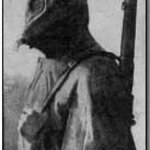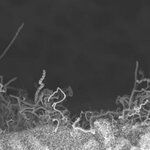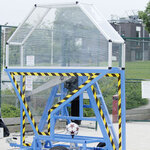Applied Physics

In case you happen to be in town:
Professor Jim Al-Khalili of the University of Surrey will host the third public Surrey Debate ‘The God Particle: Is science the new religion?’ on Wednesday, October 17 from 7.00 p.m. – 8.30 p.m. at Guildford Cathedral.
Next year, the world largest particle accelerator, the LHC, begins its hunt for a subatomic particle called the Higgs boson - the so-called ‘God particle’ that it is hoped will help explain some of the deepest questions of existence.
To mark this event a panel of experts (full list and biographies below), chaired by Professor Jim Al-Khalili,…

Everyone knows how a bicycle works - or so we think. But for 150 years why a moving bicycle can, all by itself, be so stable has been something of a mystery.
"Bicycle manufacturers have never been able to say precisely how a bicycle works," explains Dr Arend Schwab of the Faculty of Mechanical, Maritime and Materials Engineering (3mE). "They have always had to refine their designs purely through experimentation. In our model, they can enter into the computer all of the various factors that influence the stability and handling of their bicycle. The model then calculates how the bicycle will…

Phosgene is most famous for being part of the chemical arsenal used in the trenches during World War I - generals preferred it over chlorine because soldiers coughed less and therefore inhaled more. It was still stockpiled in military arsenals after the Second World War but its presence in the atmosphere today is due to man-made chlorinated hydrocarbons used in the chemical industry.
Phosgene still plays a major role in the preparation of pharmaceuticals, herbicides, insecticides, synthetic foams, resins and polymers.
Professor Peter Bernath of the Department of Chemistry at the University…

For orthopaedic implants to be successful, bone must meld to the metal that these artificial hips, knees and shoulders are made of. A team of Brown University engineers, led by Thomas Webster, has discovered a new material that could significantly increase this success rate.
The team took titanium – the most popular implant material around – and chemically treated it and applied an electrical current to it. This process, called anodization, creates a pitted coating in the surface of the titanium. Webster and his team packed those pits with a cobalt catalyst and then ran the samples through a…

A team led by biophysicist Jeremy Smith of the University of Tennessee and Oak Ridge National Laboratory (ORNL) has taken a significant step toward unraveling the mystery of how proteins fold into unique, three-dimensional shapes.
Using ORNL's Cray XT4 Jaguar supercomputer as well as computer systems in Italy and Germany, the team revealed a driving force behind protein folding involving the way its constituents interact with water. The team's results are being published in this week's edition of the Proceedings of the National Academy of Sciences.
Proteins are the workhorses of the body,…

Skis equipped with an ingenious new self-waxing device that enables them to travel quicker could make a dramatic entry onto the skiing scene in the 2008/09 World Cup season.
The device continuously applies fresh wax to the bottom of the ski during a race. Its developers are now working with manufacturers, with the aim of incorporating it into skis used in top-class international competition as early as next year.
Validated test results from the Alps show that skiers using the revolutionary system can complete a course 1-2% quicker than using conventional skis, which gradually lose their pre-…

Computer models now under development could enhance the design of sports equipment to help people of all abilities realise their sporting potential.
The models, more sophisticated and more specialised than others previously used in sports equipment design, produce unprecedentedly realistic simulations of how potential ball designs, for instance, will actually behave when in use.
This data can then be harnessed by sports equipment design teams to ensure that the final products they develop behave (e.g. bounce and spin) as required and, above all, with more consistency than ever before. This…

A revolutionary new sensor collects and immediately transmits data about posture, stride length, step frequency, acceleration, response to shock waves travelling through the body etc.
It's cufflink-sized and clipped behind the wearer’s ear, so it doesn't hinder performance and when worn by an athlete during training, it can transmit the information for immediate visual display on a handheld device or laptop used by their coach at the trackside. The coach can then harness the data to shape the on-the-spot advice and instruction they give the athlete regarding technique. By instantly adding to…

Scientists in Australia have found a way of identifying probable stem cells in the lining of women’s wombs. The finding opens up the possibility of using the stem cells for tissue engineering applications such as building up natural tissue to repair prolapsed pelvic floors. Pelvic floor prolapse is a common condition, affecting over 50% of women after childbirth; around one in ten women have surgery and a third of these women require repeated operations to correct the problem.
In research published in the journal Human Reproduction [1], Dr Caroline Gargett describes how she and her PhD…

Last month, University of Alaska Fairbanks researcher Katey Walter brought a National Public Radio crew to Alaska’s North Slope (actually, the NPR story is a lot better and has video, so you can probablly just go there and read it, but please come back when you are done - Editors ), hoping to show them examples of what happens when methane is released when permafrost thaws beneath lakes.
When they reached their destination, Walter and the crew found even more than they bargained for: a lake violently boiling with escaping methane.
“It was cold, wet and windy. We were dropped off in the…